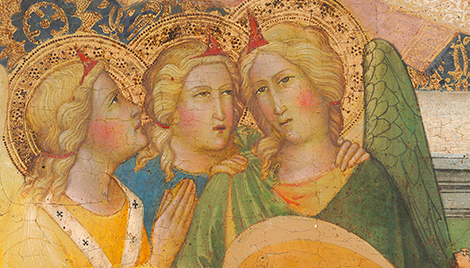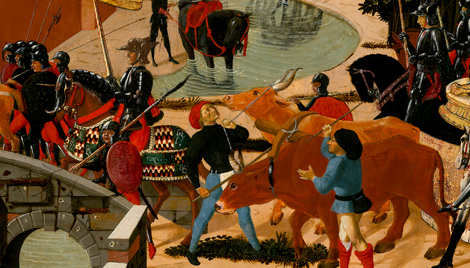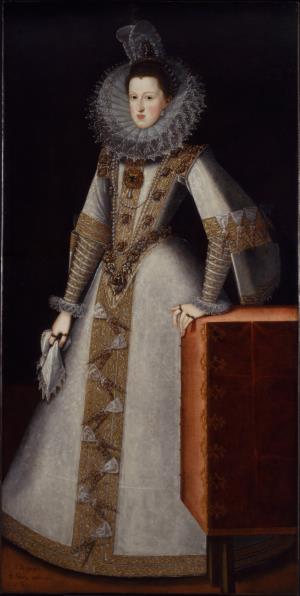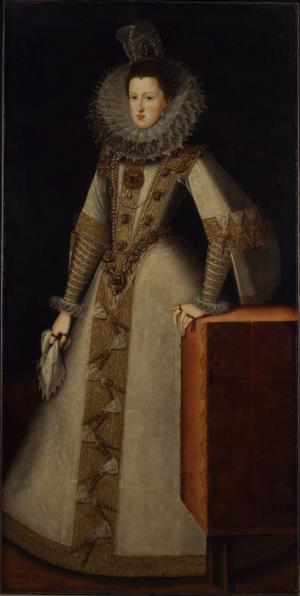Margaret of Austria, Queen of Spain
Margaret of Austria, Queen of Spain
- Artist
- Juan Pantoja de la Cruz
- Artist Dates
- 1554-1608
- Artist Nationality
- Spanish
- Title
- Margaret of Austria, Queen of Spain
- Date
- 1605
- Medium
- oil on canvas
- Dimensions
- 203.5 x 101.9 cm (80-1/8 x 40-1/8 in)
- K Number
- K1662
- Repository
- Museum of Fine Arts, Houston
- Accession Number
- 61.66
- Notes
Provenance
Commissioned by Margaret of Austria, Queen of Spain; presented after 25 November 1604 to Antonio Álvarez de Toledo y Beaumont, 5th Duke of Alba [1568-1639]. John Stuart Bligh Darnley [1827-1896], 6th Earl, Cobham Hall, Kent, by 1854; by inheritance to Edward Henry Stuart Bligh Darnley [1851-1900], 7th Earl, Cobham Hall; by inheritance to Ivo Francis Walter Bligh Darnley [1859-1927], 8th Earl, Cobham Hall; (Darnley sale, Christie's, London, May 1925, no. 14); on joint account with (M. Knoedler & Co., London and New York, and P.& D. Colnaghi, London, Colnaghi's no. A 1262; Knoedler's London no. 7440, New York no. 16177); sold on 3 February 1925 to Otto H. Kahn [1867-1934]; [1] consigned 13 March 1942 to (Duveen Brothers Inc., New York); sold to the Samuel H. Kress Foundation on 28 June 1949; gift 1961 to the Museum of Fine Arts, Houston, no. 61.66 [1] According to the M. Knoedler and Co. Records, Getty Research Center, call number 2012. M. 54; Series IV Box 118 and Box 128; Series I Box 7.
Catalogue Entry
Juan Pantoja de la Cruz
Margaret of Austria, Queen of Spain
K1662
Houston, Texas, Museum of Fine Arts (AC 61-66), since 1953. Oil on canvas. 80 1/8 x 40 1/8 in. (203.5 x 101.9 cm.). Inscribed in the lower left comer: es/Jv Pantoja de la/Facieba[t] Vallesolito [Valladolid]/.16[04]. The inscription appears to have been strengthened at an unknown date.(1) Face somewhat abraded. Canvas relined c. 1920; varnished by Modestini, 1953. Houston, 1953, pl. 33. Margaret, seen in full-length, stands facing to the left in three-quarter view holding a reticella lace-trimmed handkerchief with the left hand and leaning on a camilla or brazier table covered with a light-red frog-fastened velvet. She wears the extremely conservative attire characteristic of the Spanish court. Her white damask, gold-embroidered dress is distinguished by hanging oversleeves and many jeweled attachments including a girdle; eight twin golden fastenings (puntas) composed of twin sword-like forms with grey bows at the ends are applied to the front; three more can be seen on the right sleeve. She also wears a long double-strand pearl necklace; suspended on her breast is a great jewel with a pear-shaped pearl below known as the joyel rico.(2) Her headdress is made of white feathers and jewels with a pearl-studded comb. Around her neck is a lace ruff and lace cuffs are at her wrists. A massive pearshaped pearl earring is seen in the right ear; four rings are worn on the right hand and two on the left. Margaret of Austria was born in Graz on 23 December 1584, the daughter of the Archduke Charles II of Austria and Mary of Bavaria; she died on 6 October 1611 in El Escorial. She was married to Philip III of Spain in Valencia on 18 April 1598. This union resulted in eight children. Her third child, born in 1605, became Philip IV. K1662 is characteristic of the extremely formal, hieratic style in favor at the Spanish court in the late sixteenth and early seventeenth centuries. Pantoja de la Cruz's rigid royal effigies continue and intensify the abstract character of court portraiture first brought to Spain in adaptations of Tuscan Mannerist portraiture such as that of Bronzino. At least seven portraits of the queen, generally similar in pose and style, survive from Pantoja's hand or studio (dating 1602-9). According to Kusche, the pendant to K1662 may be a Philip III (London, Banco Español de Londres) (see Text Fig. 46) which is signed and dated 1605.(3) Both are itemized and described in a list of receipts by Pantoja from the Queen for 25 November 1604. Soria viewed the portrait of Queen Margaret (London, Royal Collection, Buckingham Palace) dated 1605 as superior to K1662. In the former the Queen is shown in generally similar attire; however, the camilla is placed at the left and the Queen opens an illuminated book that rests upon it with the left hand.(4) Although Pantoja's own style becomes increasingly rigid throughout the first decade of the sixteenth century, the flattened, simplified quality of K1662 suggests the possibility of some studio participation in its execution.
References
(1) The place and year are both rubbed and have been given as read by Maria Kusche, Juan Pantoja de la Cruz, Madrid, 1964, p. 153, Cat. No. 22. (2) The jewel is composed of the diamond 'El Estanque' and the pearl 'La Peregrina'. See Lord Twining, The Crown Jewels of Europe, London, 1960, p. 616. (3) Kusche, op. cit., p. 146, Cat. No. 9. Despite the inscription, Kusche dated Philip III 1604 or 1605. This portrait, with K1662, was in the collection of the Earl of Darnley. (4) George Kubler and Martin Soria, Art and Architecture in Spain and Portugal and their American Dominions, 1500-1800, Baltimore, 1959, p. 207.








